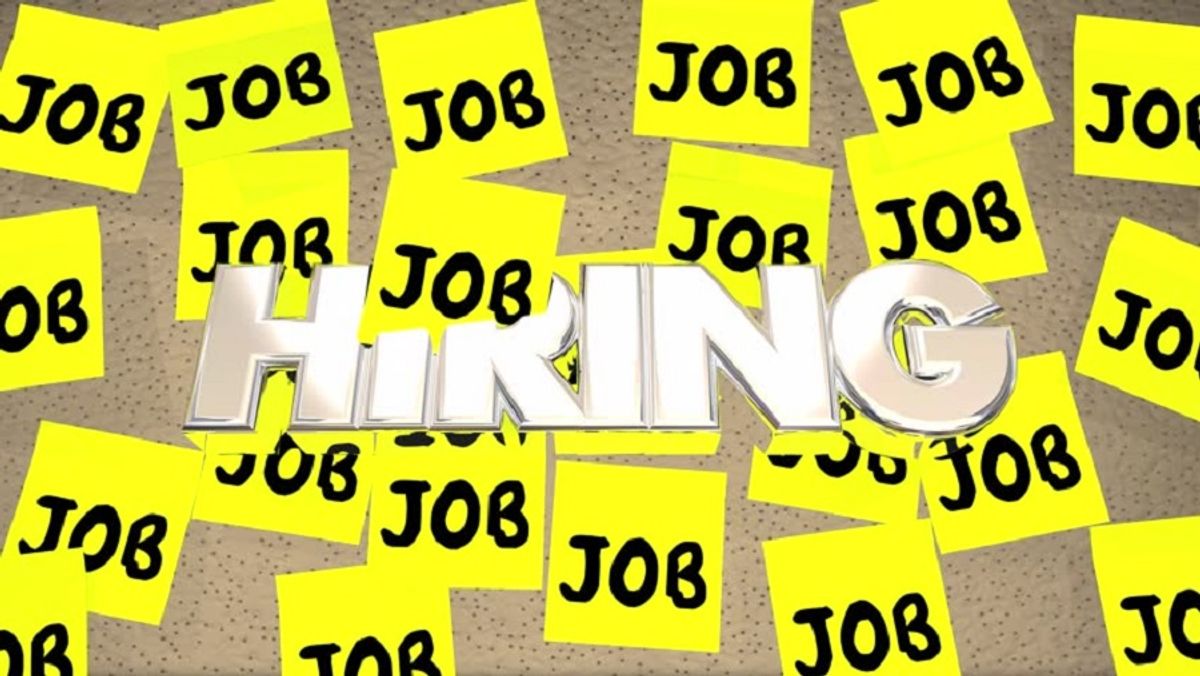The claim was true based on data that were accurate in January 2018, when the meme was first created.
The data have since been revised, with the result that 2017 had the lowest jobs growth since 2012, not 2011.
President Donald Trump has made a point of touting positive economic figures as one of the most important accomplishments of his tenure so far, frequently citing the United States' gross domestic product (GDP) growth and low unemployment.
However, some critics of the president have pushed back against these claims, and in October 2018 a meme regained popularity on social media which appeared to show that jobs growth had actually declined under President Trump as compared to Barack Obama's second term between 2012 and 2016:
This meme, posted on 10 October by the anti-Trump Facebook page "Groopspeak," was originally created and posted by the left-wing web site Democratic Underground in January 2018. In an accompanying blog post, Democratic Underground cited a MSNBC report which had the headline "Job growth slows to a six-year low in Trump's first year." The report provided the annual job creation figures used by Democratic Underground in their meme:
Providing some additional context, now that we have data for all of the previous calendar year, we can note that the U.S. added 2.09 million jobs in 2011, 2.14 million jobs in 2012, 2.3 million in 2013, 2.99 million in 2014, 2.71 million in 2015, 2.24 million in 2016, and 2.05 million in 2017. Or put another way, while Donald Trump’s first year as president has been pretty good overall for job creation, Americans nevertheless saw the slowest job growth in six years.
You might have noticed that some of the figures that ended up in Democratic Underground's meme are slightly different than those in MSNBC's report. This is because the meme appears to have been created before MSNBC added a correction to their article and adjusted some of the figures.
We analyzed the data again and got slightly different results from those included in both the meme and MSNBC's updated report. However, this does not appear to be due to an error on the part of MSNBC, but rather a function of the fact that the Bureau of Labor Statistics (BLS) revises monthly employment data repeatedly.
The question of how much credit or blame presidents should get for the performance of the economy under their tenure is a messy and longstanding one, and not something we'll be addressing here. (A good resumé of the current "Trump vs. Obama" debate can be found here.) This article is focused solely on the statistical claims made in the Democratic Underground meme and in MSNBC's analysis.
The numbers
The measure typically used to track jobs growth (and the one used by MSNBC in January 2018) is the month-on-month or year-on-year change in seasonally adjusted "total nonfarm employment."
Every month, the BLS conducts an exercise called the "establishment survey," which involves collecting payroll data from a sample of around 150,000 private non-agricultural businesses and government agencies nationwide. These data are then used to calculate (among other statistics) the total number of people employed in all industries apart from agriculture.
In order to give a truer picture of employment trends, economists at the BLS (like their counterparts around the world) try to filter out the effects of seasonal changes (for example surges in youth employment during school and college vacations) by also publishing "seasonally adjusted" figures, which typically form the basis of analysis and commentary on what the BLS calls "the employment situation."
So in order to figure out net jobs growth in a given calendar year, one would take the seasonally adjusted number of nonfarm employees at the end of December, then subtract the seasonally adjusted number of nonfarm employees at the end of the previous December.
When we did that on 11 October 2018, we obtained the following results (a spreadsheet containing the relevant data can be downloaded here):
2012 -- 2.151 million jobs added (1.62 percent growth)
2013 -- 2.301 million jobs added (1.7 percent growth)
2014 -- 3.005 million jobs added (2.19 percent growth)
2015 -- 2.712 million jobs added (1.93 percent growth)
2016 -- 2.344 million jobs added (1.64 percent growth)
2017 -- 2.188 million jobs added (1.5 percent growth)
As a reminder, this is what Democratic Underground's meme presented:
2012 -- 2.19 million jobs created
2013 -- 2.33 million jobs created
2014 -- 3.11 million jobs created
2015 -- 2.74 million jobs created
2016 -- 2.24 million jobs created
2017 -- 2.04 million jobs created
The individual yearly discrepancies are not particularly great, but revisions to the data between January and October 2018 have had one significant effect: jobs growth in 2017 (2.188 million) was in fact the lowest since 2012 (2.151 million) not since 2011, as both MSNBC and Democratic Underground stated (accurately, at the time).
So where the meme proclaims "2017 was the worst year for job creation in six years," it should say "in five years," based on the updated figures. However, the meme accurately presents the underlying trend that 2017 did indeed see the lowest jobs growth in several years.
Furthermore, the rate of job growth in 2017 (the number of jobs added as a percentage of the number of jobs 12 months earlier) was 1.5 percent, the lowest percentage jobs growth since 2010, when it was 0.81 percent.

